At the tail-end of Hurricane Dorian, a fierce wind battered our ferry as we pitched and rolled through the chop, blown into a white-capped frenzy. As water smacked against us, there was little choice but to ride the waves of nausea after embarkation in Denmark. Two days of being tossed up and down in the North Atlantic, we anchored with gratitude to an island tucked between Norway and Iceland.
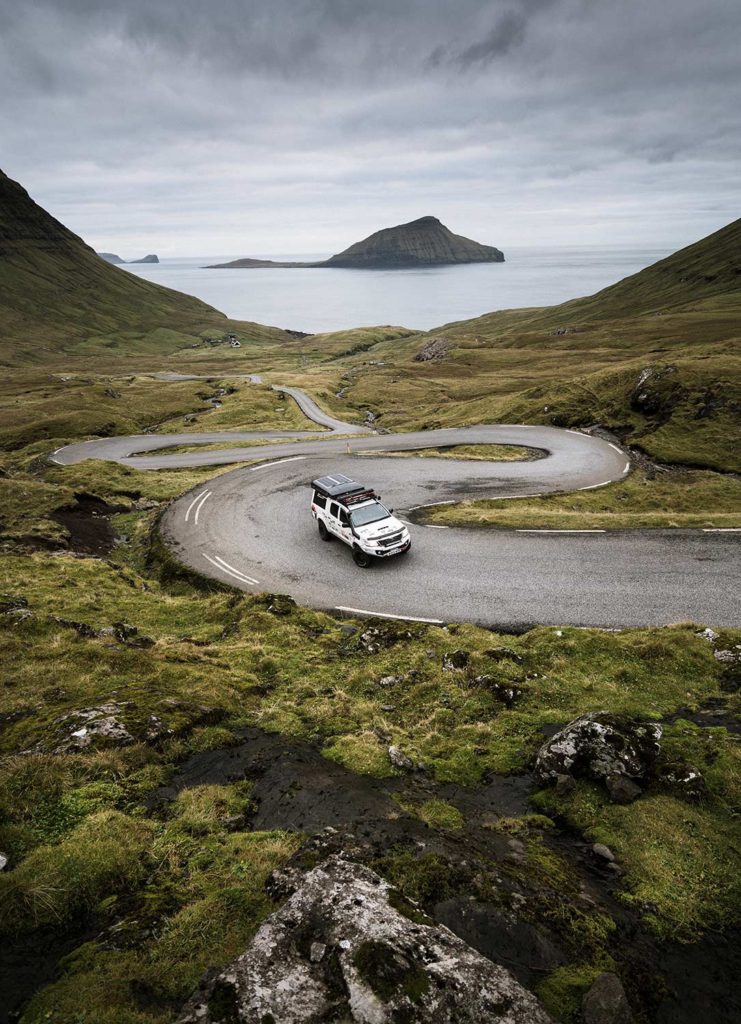
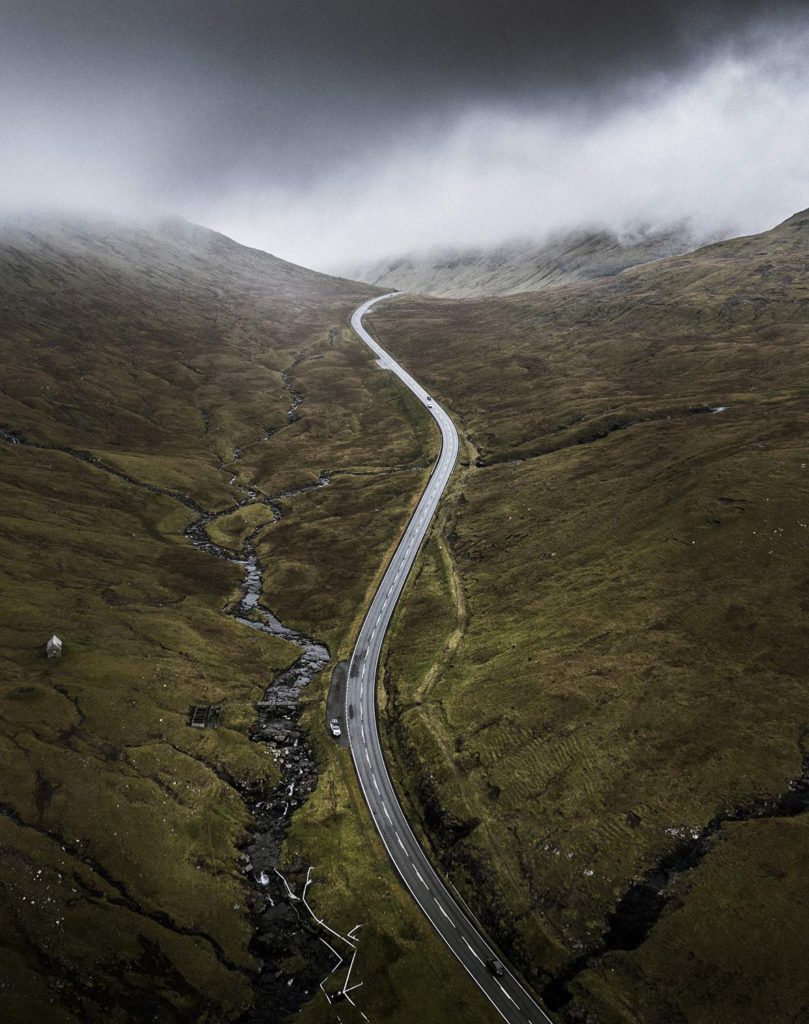 Connected by causeways, bridges, and mountains gift-wrapped in a velvety green – heathland ran unbridled through every windswept valley. A startling way to encounter the Faroe Islands, I wondered about how else we’d experience this near, faraway place. New territory for us, it comprised the second leg of our Cape-to-Cape expedition, from Northern Norway to South Africa.
Connected by causeways, bridges, and mountains gift-wrapped in a velvety green – heathland ran unbridled through every windswept valley. A startling way to encounter the Faroe Islands, I wondered about how else we’d experience this near, faraway place. New territory for us, it comprised the second leg of our Cape-to-Cape expedition, from Northern Norway to South Africa.
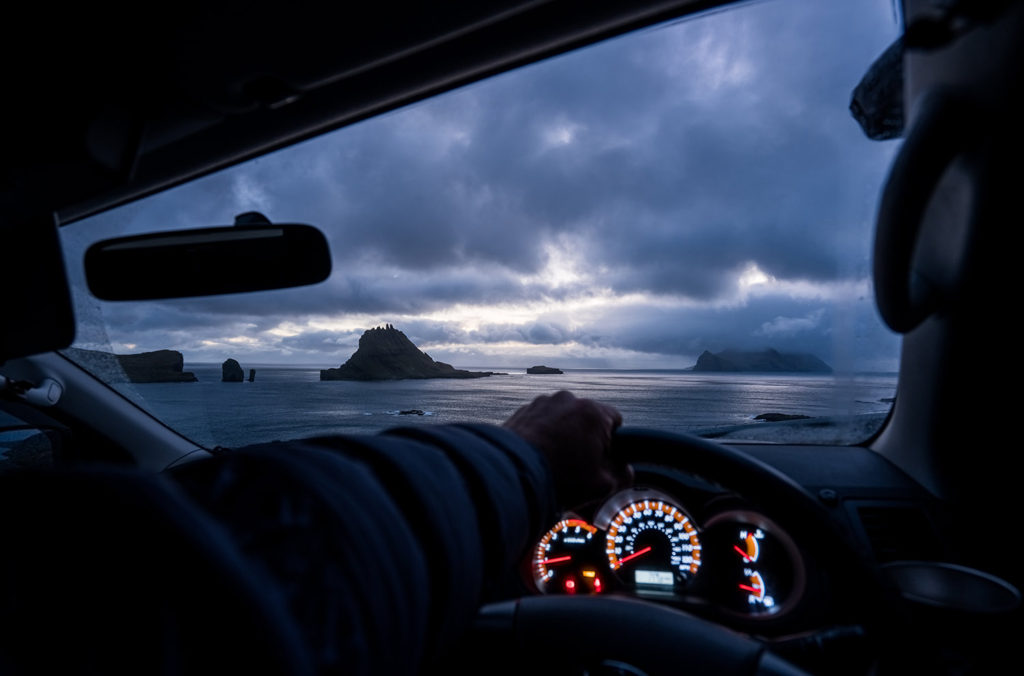
Location
An hour’s flight from Edinburgh, the Faroes is a self-governed land of Denmark. Formed on basalt layers some 60-million years ago, it comprises 18 rocky, volcanic islands of barely trammelled stomping ground, 70-miles long, 47-miles wide. No point on these islands is more than three miles from the sea.
Until Instagram gives the hidden pearl the same exposure as Iceland, it has to be one of the Nordics’ best-kept secrets. That said, a resident admitted that social media imbued the locals with a re-inspired outlook to the natural splendour sitting on their doorstep, some of whom have capitalised on that.
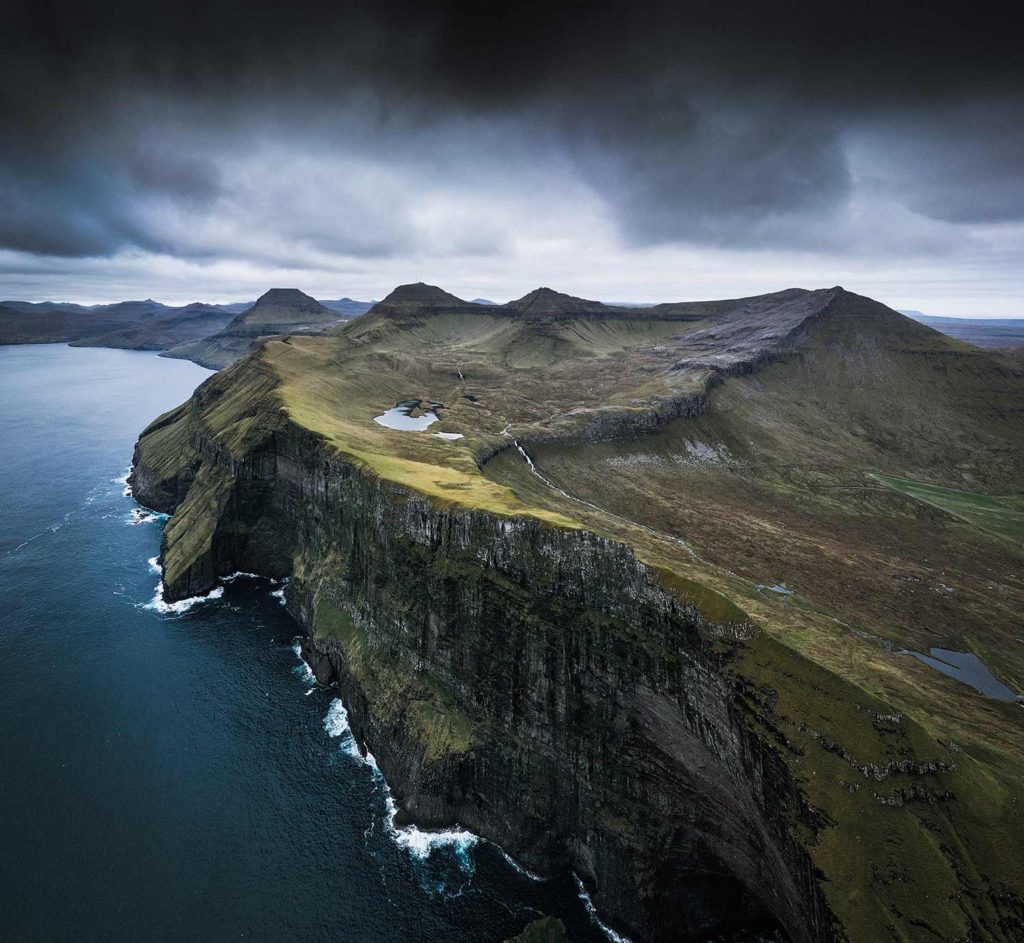
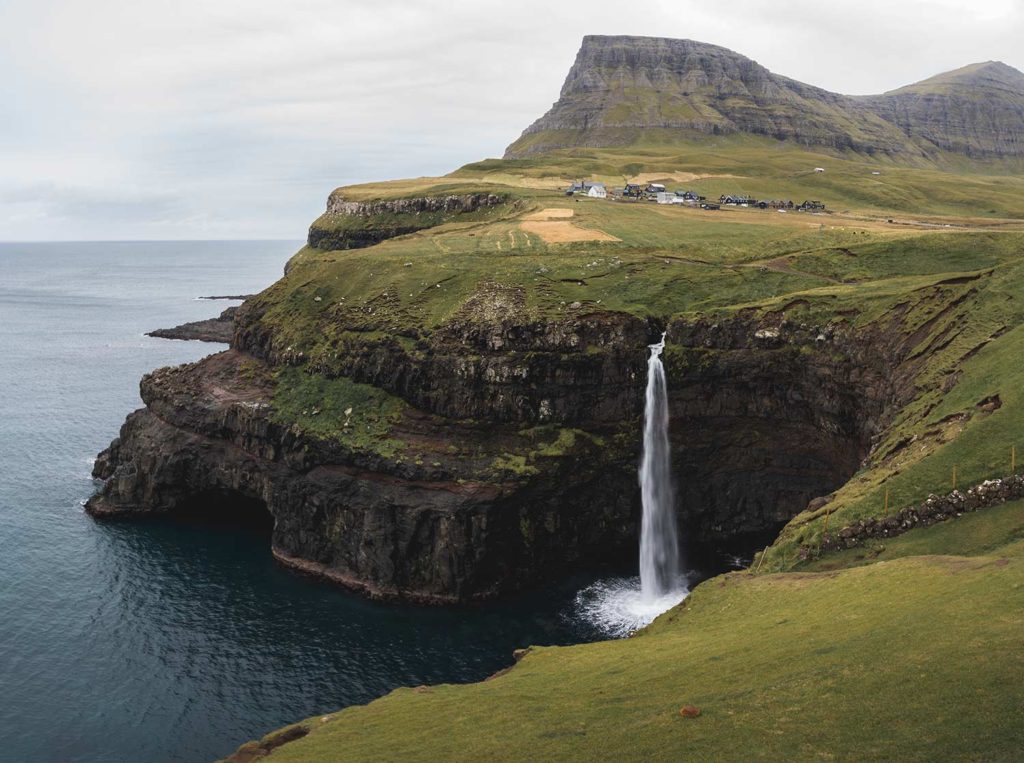
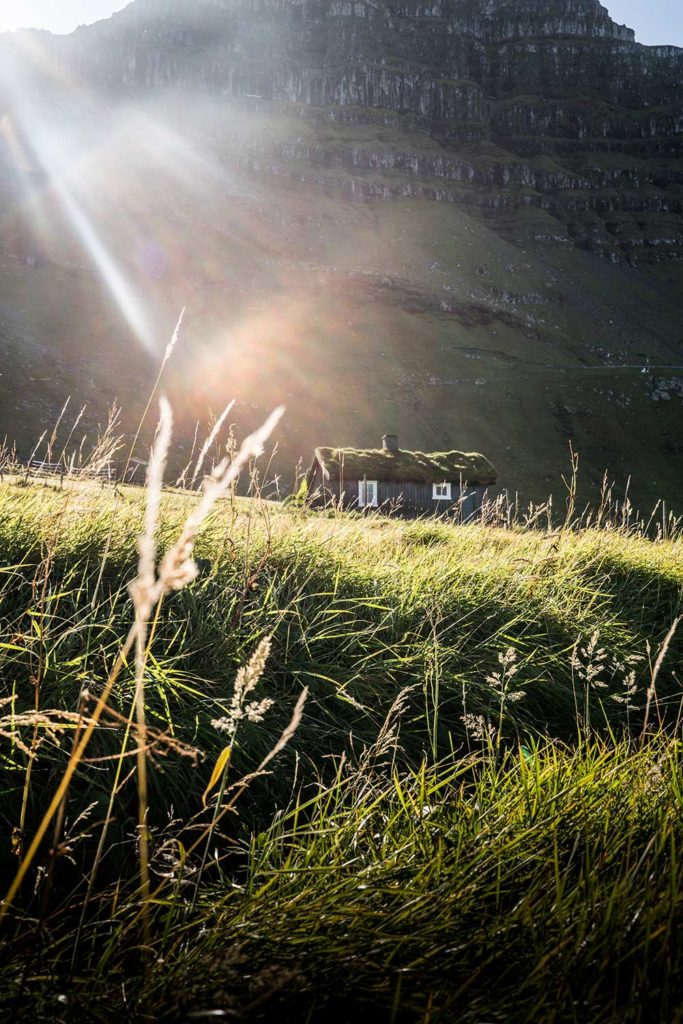
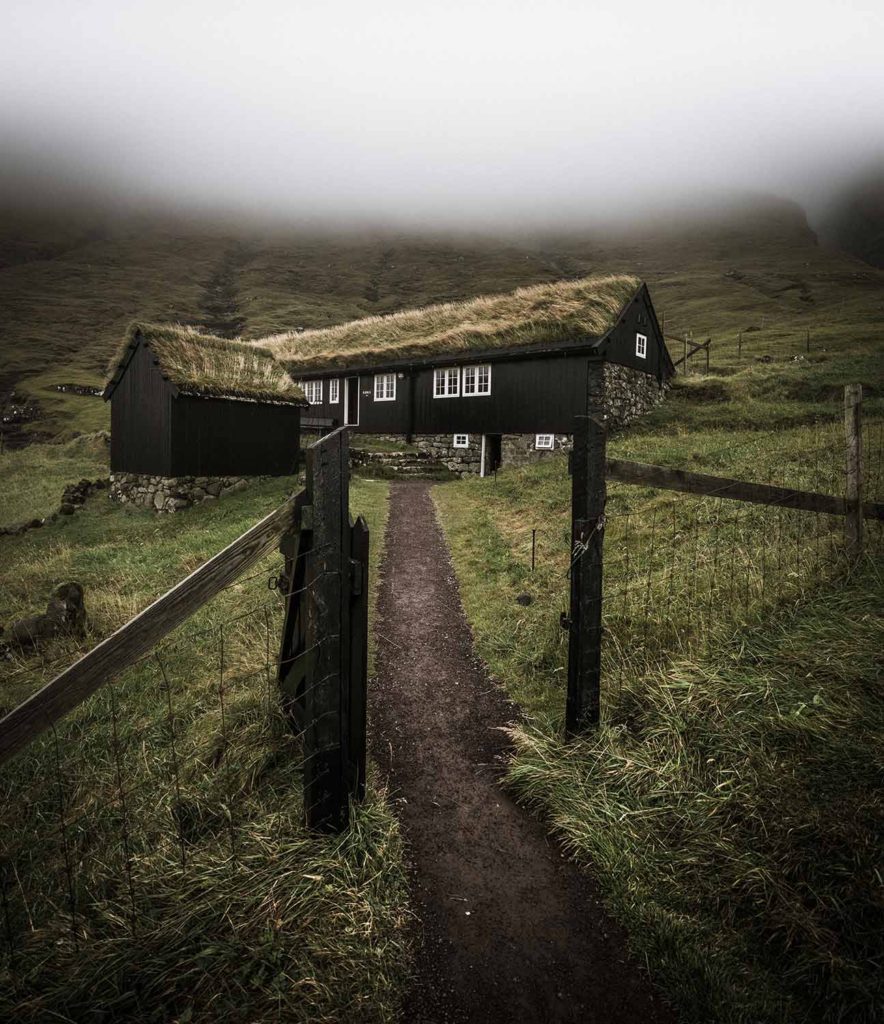
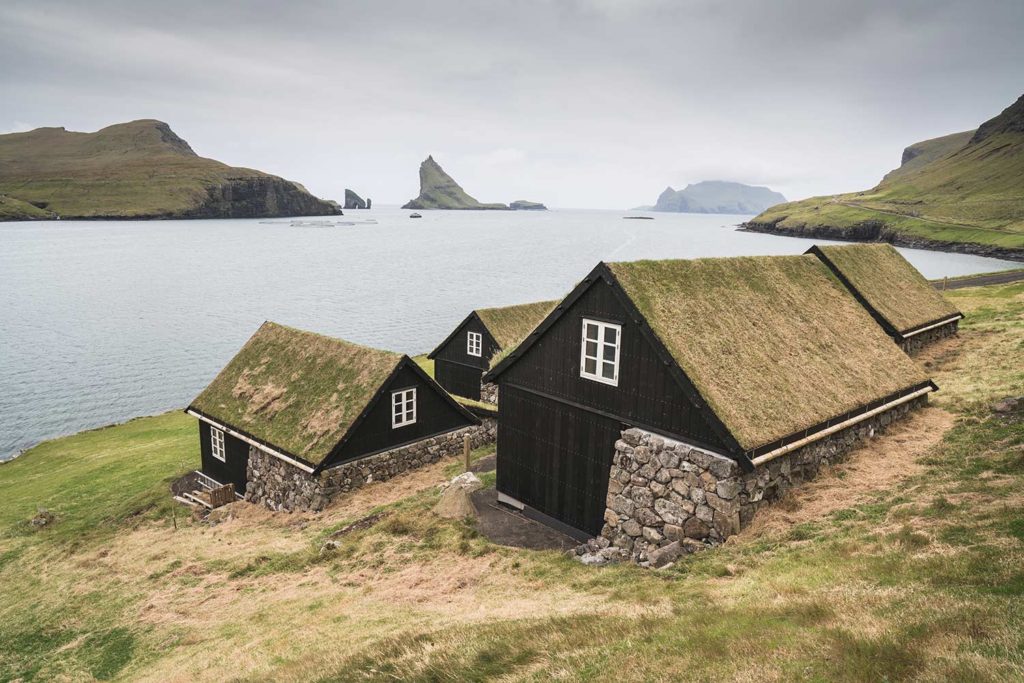
Locale
It began with a Viking “thing” taking after the Nordic God of war, Thor, followed by a marketplace, later it became a bustling town, and today, Tórshavn is one of the smallest capitals in the world. Forget traffic-clogged roads and throngs of tourists, life is how it should be in the Faroes. Unhurried with a sense of well-being.
Incredibly, the Prime Minister’s number is in the phone book, buses in the capital are free and Faroese, the national language, has featured on milk cartons to preserve it from extinction. Fortunately, English is widely spoken. There are as many traffic light sets as there are hostels: three. Oh, and a football field that doubles up as a campsite for all those partial to accommodation which errs on the whimsical.
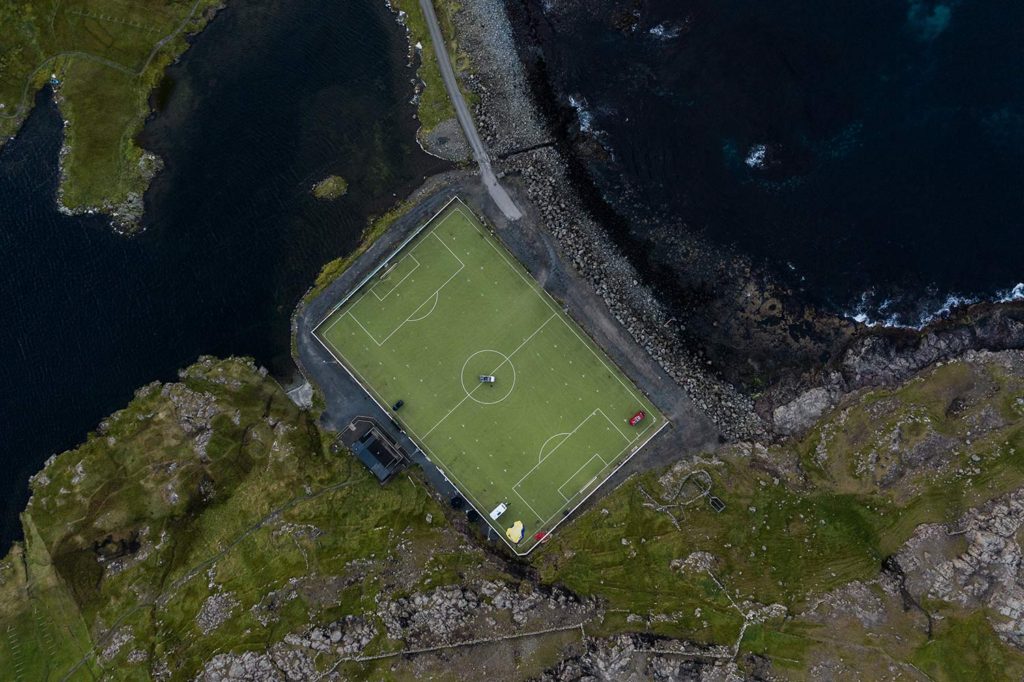
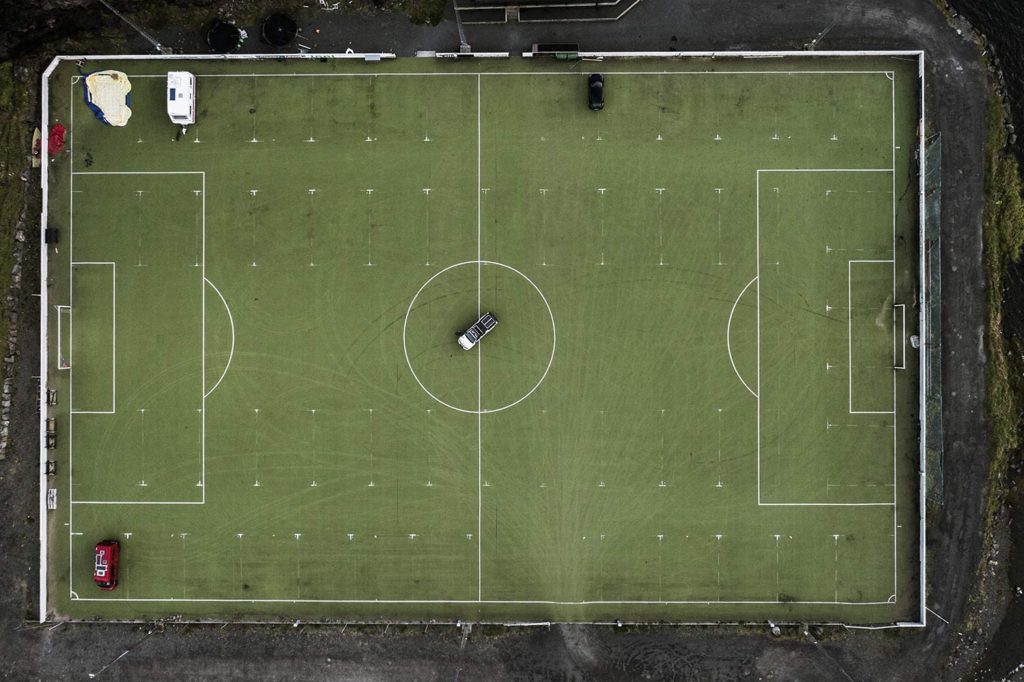 Population
Population
Fetchingly, the close-knit archipelago’s population is a shade north of 50,000. Sheep, used as constant lawnmowers, outnumber the locals nearly 2:1. Despite the small human populace, there are 80 nationalities. Such diversity partly stems from when male Vikings settled 1,000 years ago, but not with their Norwegian female counterparts in tow; they scooped up women from Scotland and Ireland.
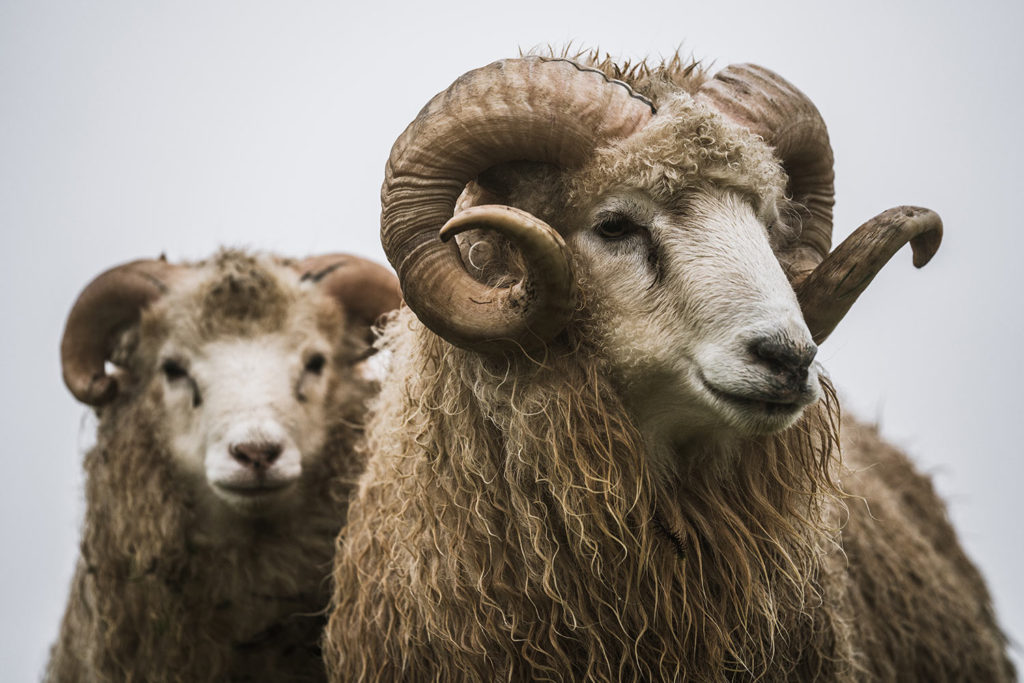
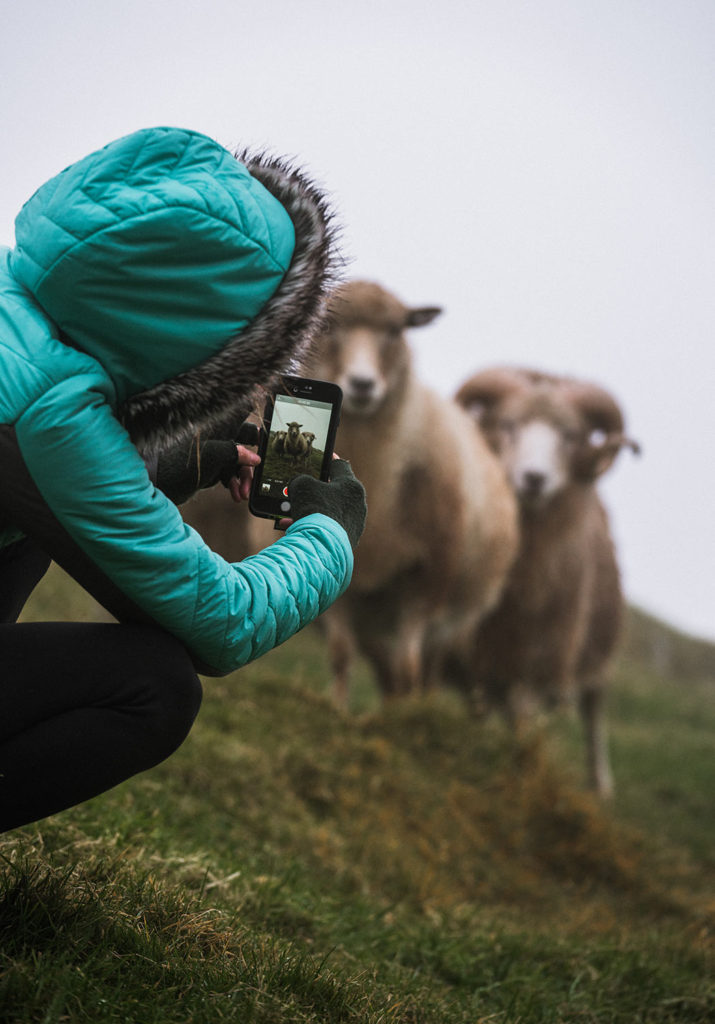
 The Faroese
The Faroese
While the Faroes may suffer from a little island mentality, it’s by no means off-putting. I found it quite comical when several women drivers pipped their horn in frustration by our cruisey speed; one overtook moments before we entered a one-way tunnel into a single-lane black hole.
Occasionally though, like the cold slap of air we received on pre-dawn mornings, you’ll spot a no-further “Enough!” sign to deter tourists, erected by a local farmer. That, or a coin-making turnstile complete with a chip and pin credit card machine at the start of a trailhead, commanding a hefty fee for roaming on private land.
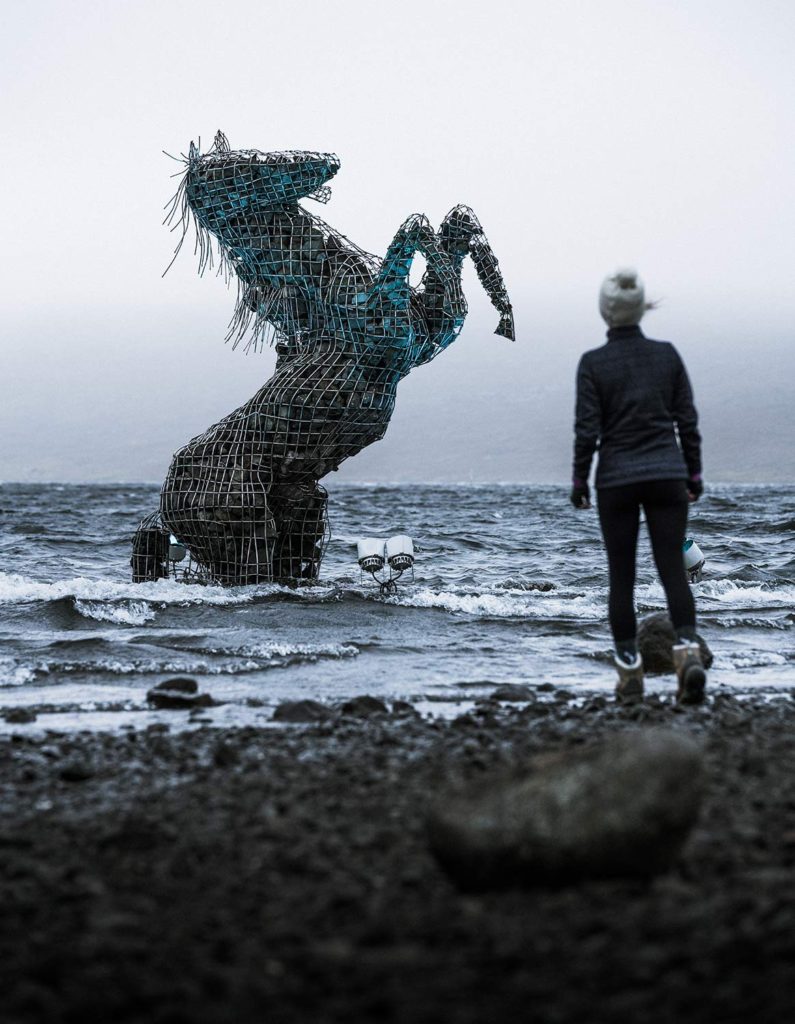
Granted, if I was from an isolated community who’d had the locale to myself since the beginning of time, I too, may well perceive my home as exceptional to the rest of the world, and probably have a protective attitude in not wishing to share it to match.
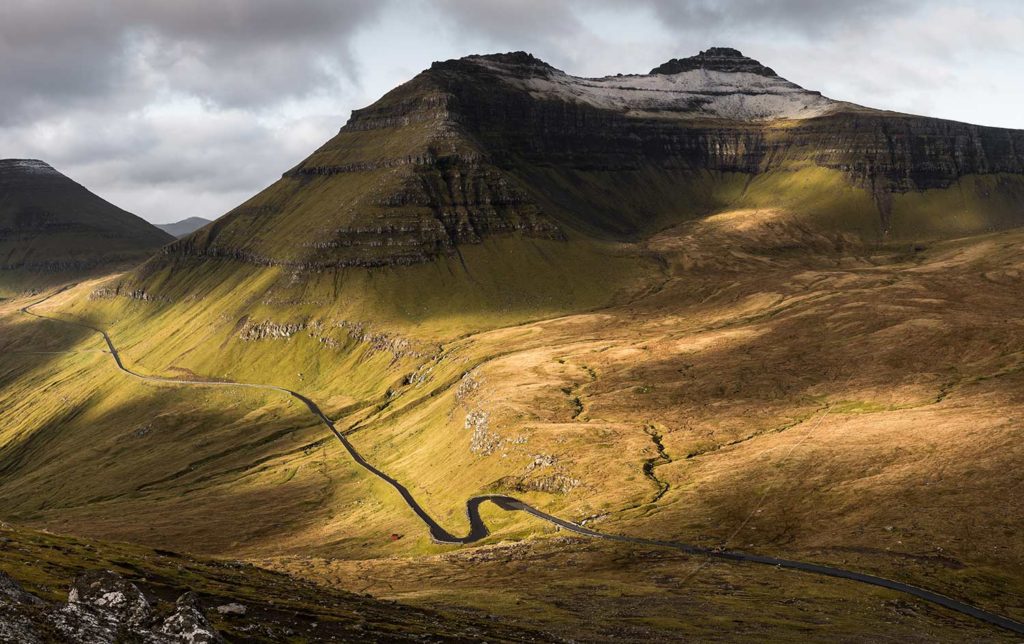
No matter, the place bereft of people left me feeling privileged to be alive. In fact, the islands represented a radiant new place, seen with fresh eyes for the first time in a while.
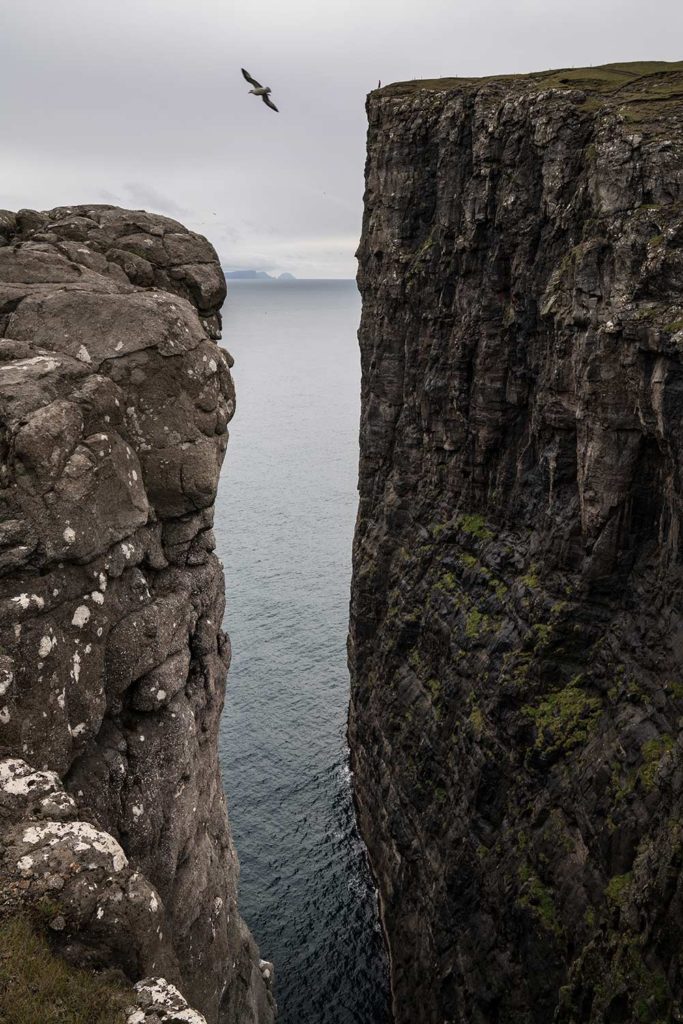
Lake Sørvágsvatn and Múlafossur waterfall, Vágar
One morning, dawn came up in streaks and slashes over thick banks of cloud roiling over the hillside. We emerged at first light. I rubbed my palms into my sleep-heavy eyes to see a landscape of tundra-like appearance. Although a lack of trees characterised the Faroes, the plant life was festooned with mosses, common juniper and dwarf cudweed. Akin to being in a douvet of green, it was comforting.

Located on Vágar, ambling to Lake Sørvágsvatn cost us an hour on foot and £23 per person.. After taking one of two gravel roads, the trailhead began on the outskirts of Miðvágur at a small parking area. If a car can’t get you there, bus 300 from Tórshavn will. Sørvágsvatn is the Faroes’ largest lake spilling out into the sea via Múlafossur, a plunging 40-metre waterfall. Due to the greater height of the cliffs at Trælanípan, which flanked the waterfall, gave rise to a striking illusion that the lake was perched high above the sea, tilting outwards.
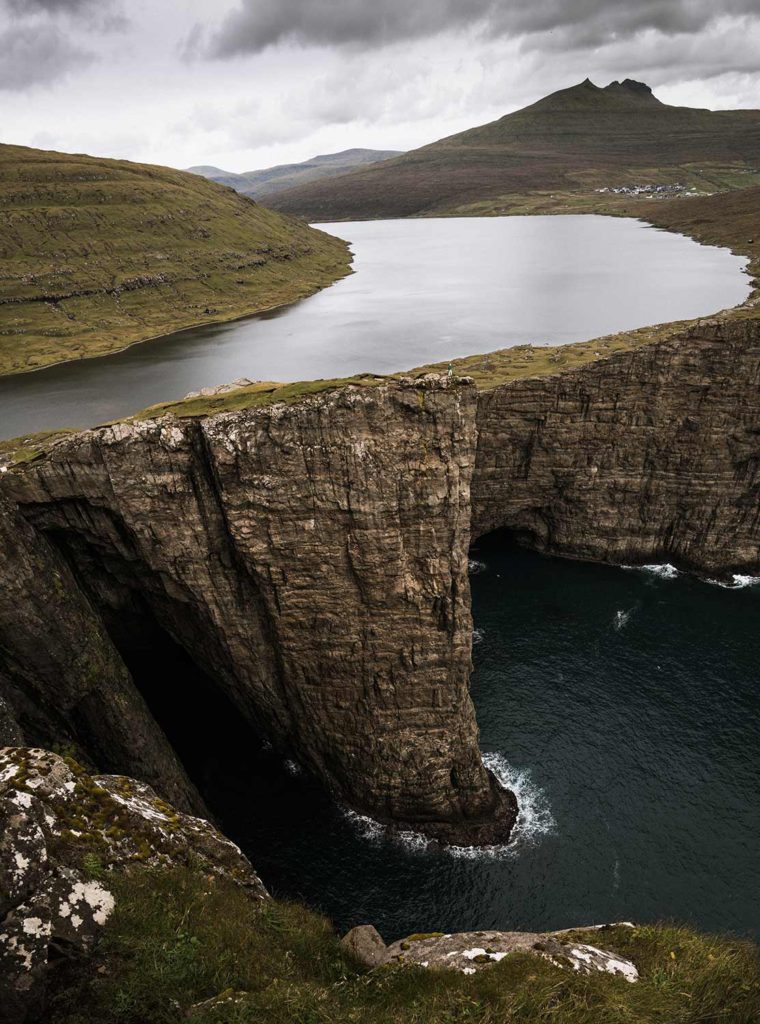
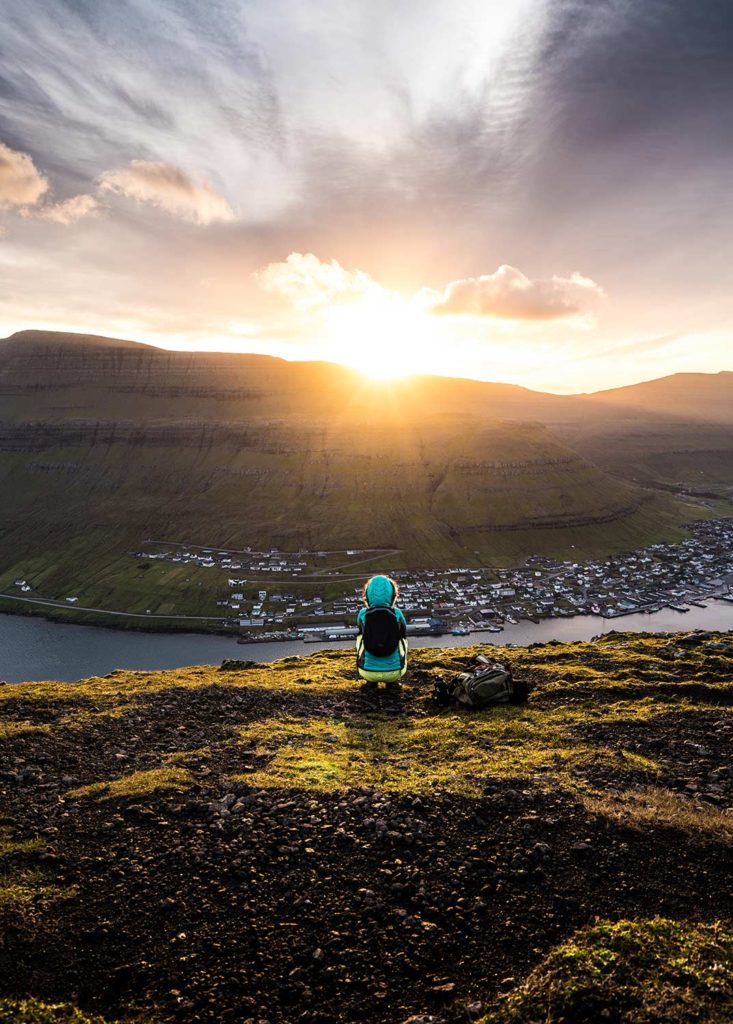
When dense swirls of clouds billowing over the landscape were not obscuring everything, vertiginous coastal cliffs revealed themselves. Within them, caves, cracks and holes carved by the surf over millennia harboured vast numbers of birds. Fleeing their nests, big colonies of Northern gannets, fulmars and storm petrels swooped and soared around us. Lo! – Jason even spotted a merlin.
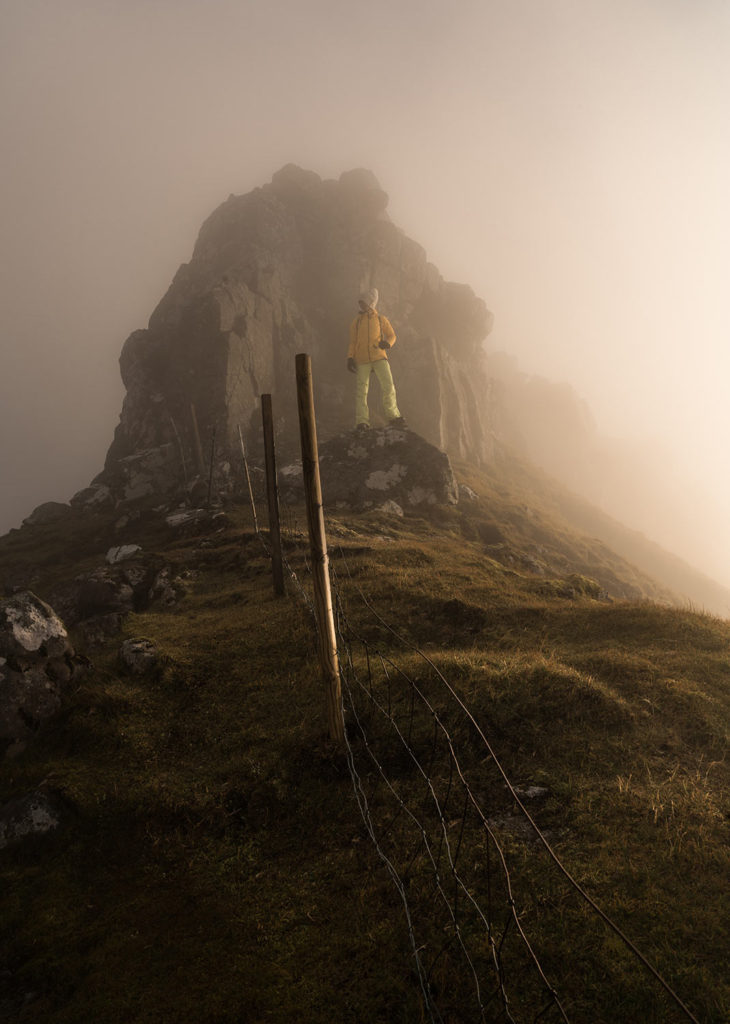
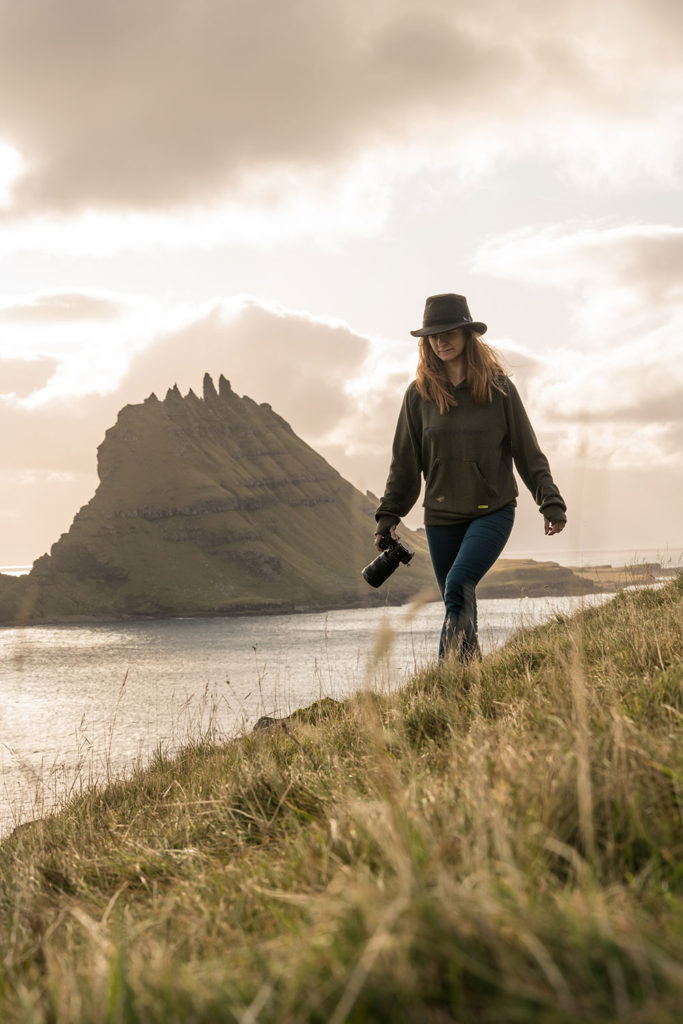
On my left was a fjord bejewelled with lime-green mossy looking icebergs with Tolkien-sounding names like Tindholmur. A pair of grass-roof blackhouses lay at the bottom of this imposing wedge of rock, turfed once for insulation but now a symbol of tradition. I passed cairns with names such as Liksteinur, meaning “dead body rock” – where coffin-bearers rest en route to the cemetery. At the top, we gawped at a valley where a path switch-backed sharply down to a settlement: Gasadalur. Unreachable by boat, word has it that the postman makes this daunting journey three times a week. What a place to live!
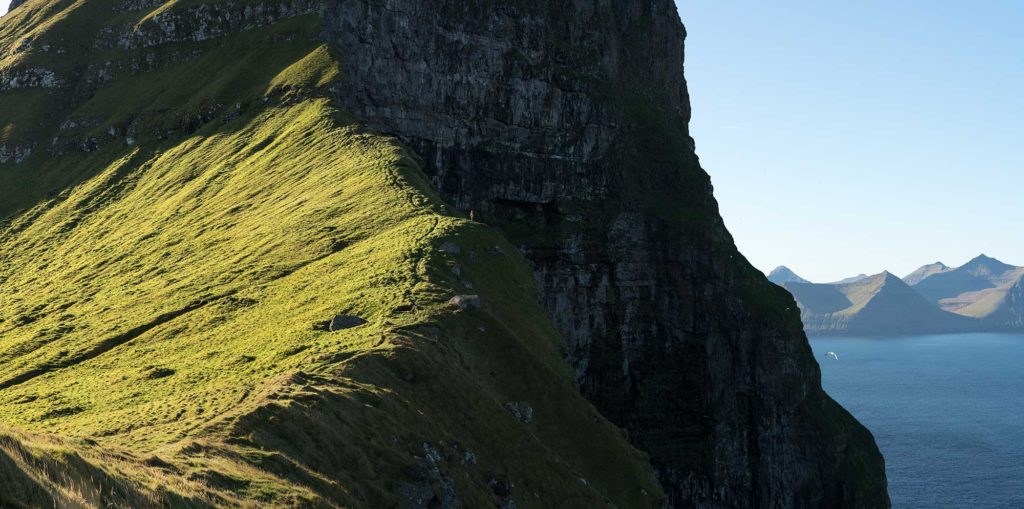
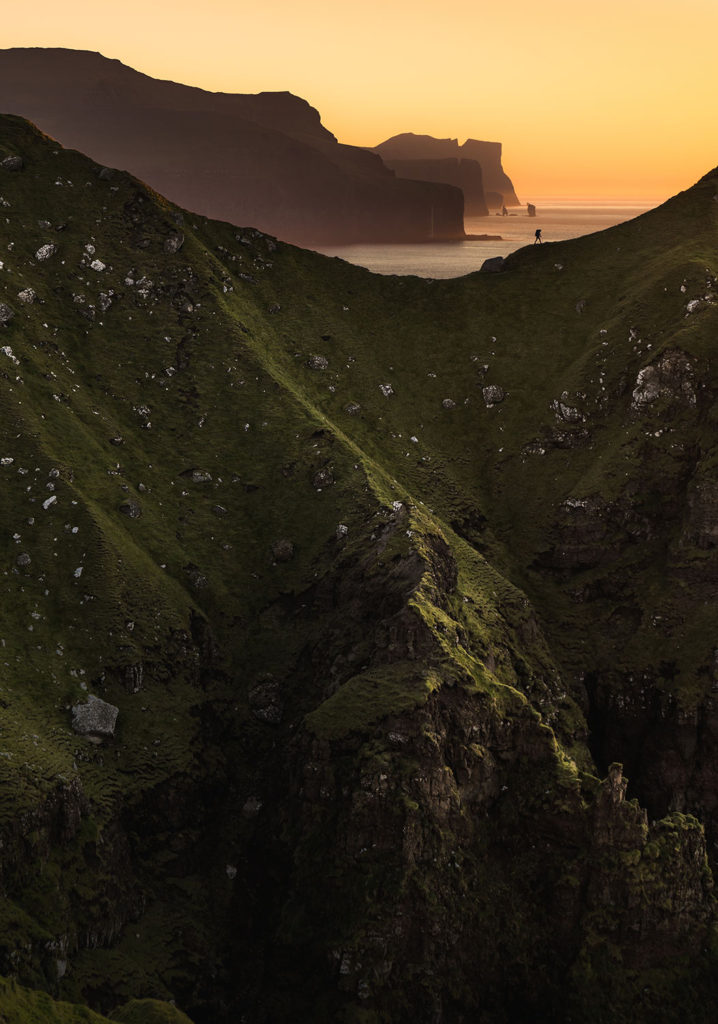
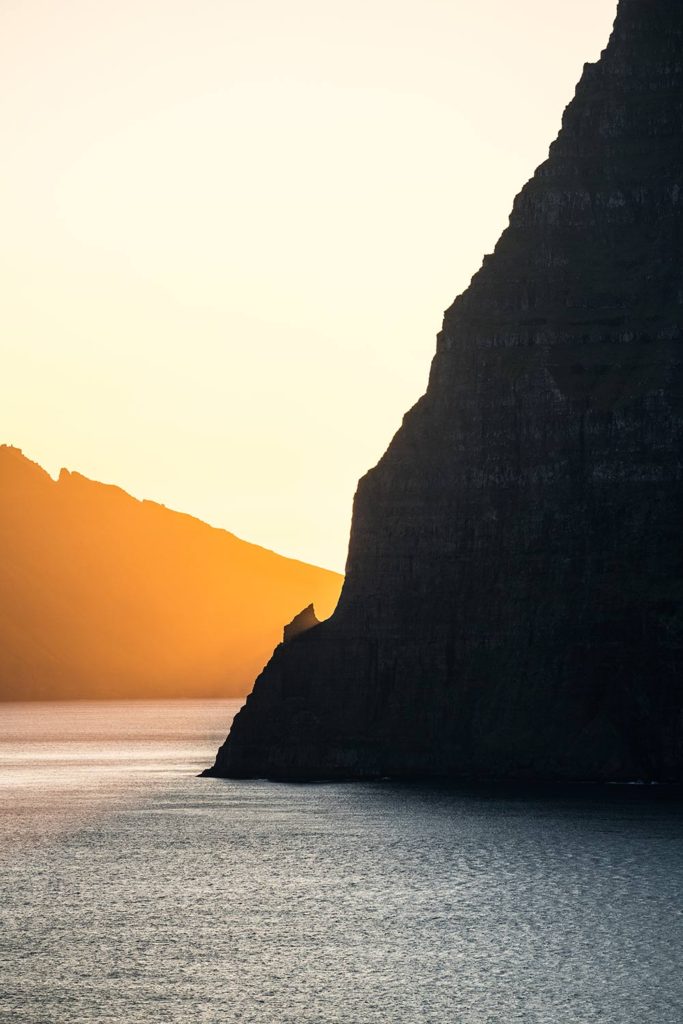 On a day we struck gold between the rain sputtering down, a rainbow burst forth and out popped the sun bathing us in a weak but perceptible warmth. My muscles, tight from the trek to the lake, relaxed in a fluid chain reaction as if I’d swallowed the warmth of the day. As the day wore into late afternoon, a breeze whistled off the long slender island and rustled past us.
On a day we struck gold between the rain sputtering down, a rainbow burst forth and out popped the sun bathing us in a weak but perceptible warmth. My muscles, tight from the trek to the lake, relaxed in a fluid chain reaction as if I’d swallowed the warmth of the day. As the day wore into late afternoon, a breeze whistled off the long slender island and rustled past us.
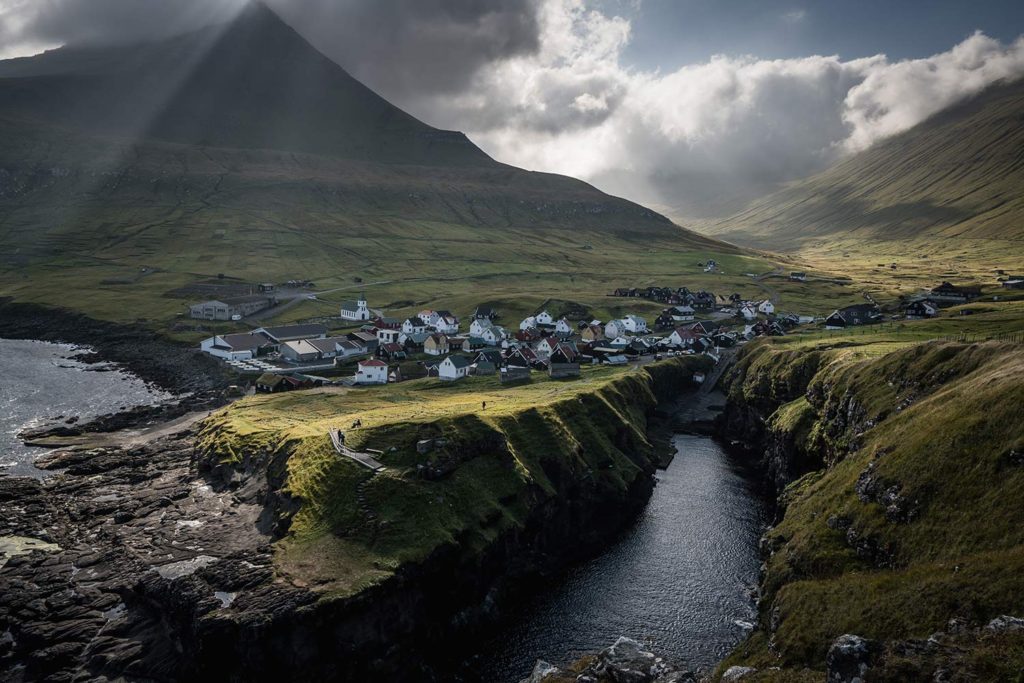
Situated on Kalsoy’s northern promontory, another unmissable, self-guided hike to Kallur Lighthouse took 45 minutes each way. Kick-starting at a small car park in the village of Trøllanes, the one-and-a-half-mile tramp is manageable for all. An established grassy, dirt trail posed no real challenges. Although wind and fog can make life underfoot treacherous on the exposed paths near the lighthouse.
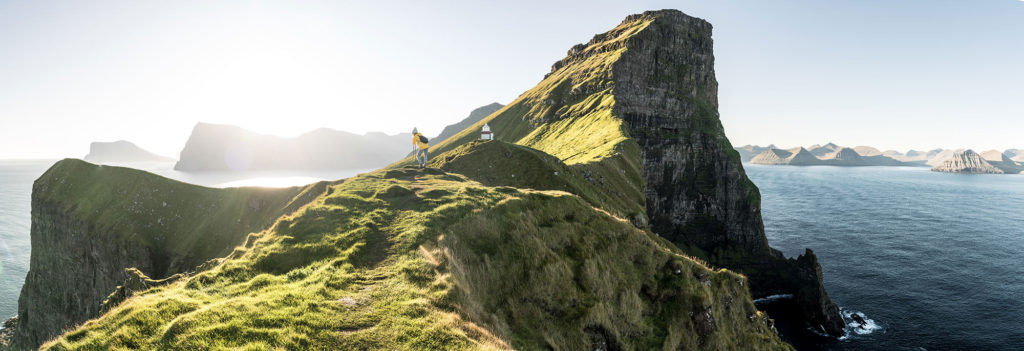
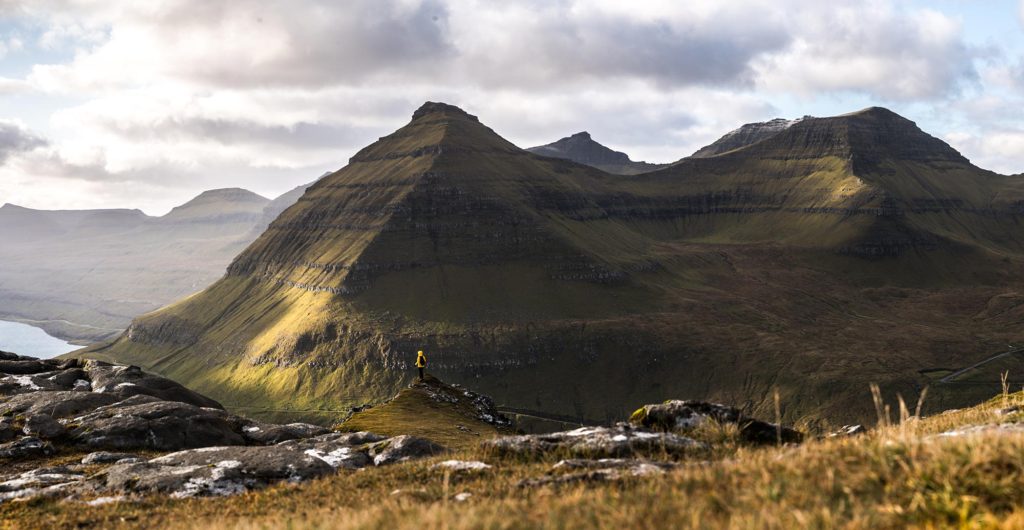 By the time we reached the lighthouse, the air had filled up with the grainy light of dusk. Post the thigh burning hike at the ridgeline, life became serene, expanding into calm like a flower budding into air.
By the time we reached the lighthouse, the air had filled up with the grainy light of dusk. Post the thigh burning hike at the ridgeline, life became serene, expanding into calm like a flower budding into air.
The hike is accessible via a ferry from Klaksvík on Borðoy. Most day-trippers catch the return ferry but if an itinerary doesn’t bind you, you could wind up with the place to yourself at sunrise or sunset. After puffing my way up like an old train to the ridgeline, there it was: Kallur lighthouse. Thighs still burning as I reached the summit, the air had filled up with the grainy light of dusk. The sun became a smear of butterscotch-yellow light above the blue-green waters, rocky protrusions poking up on the periphery.
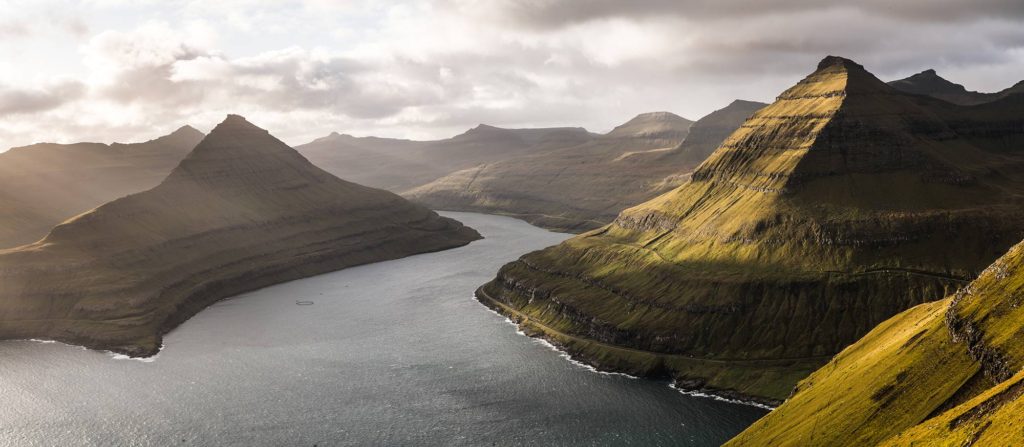
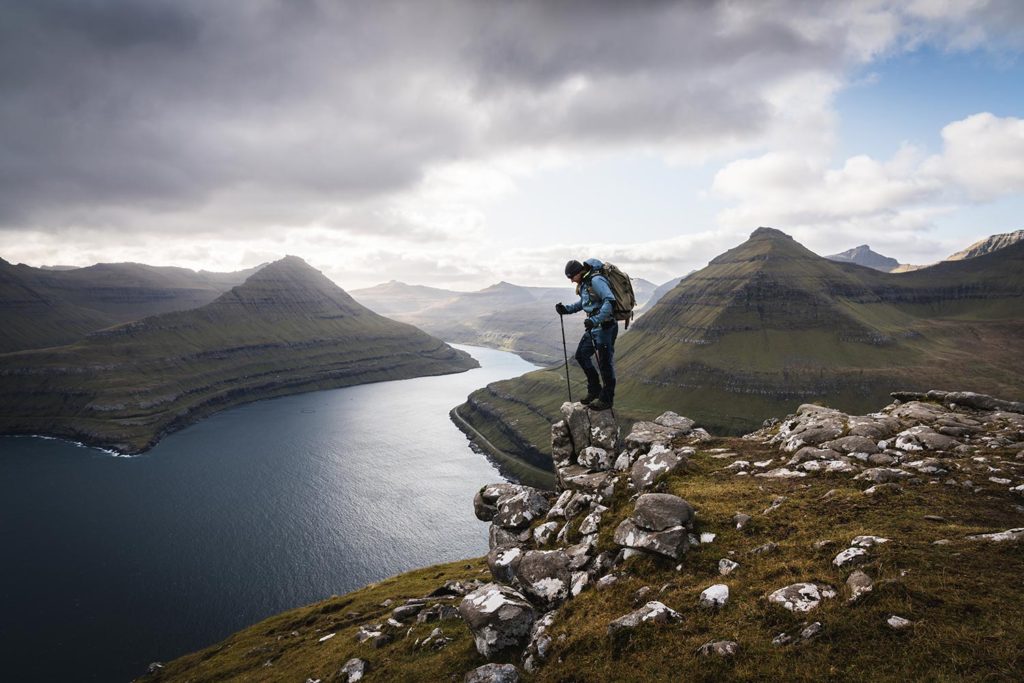
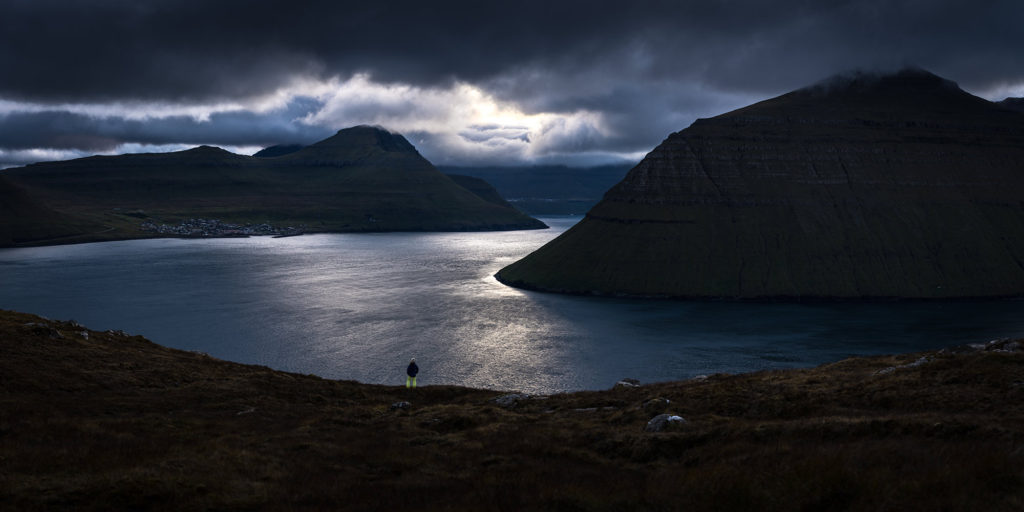
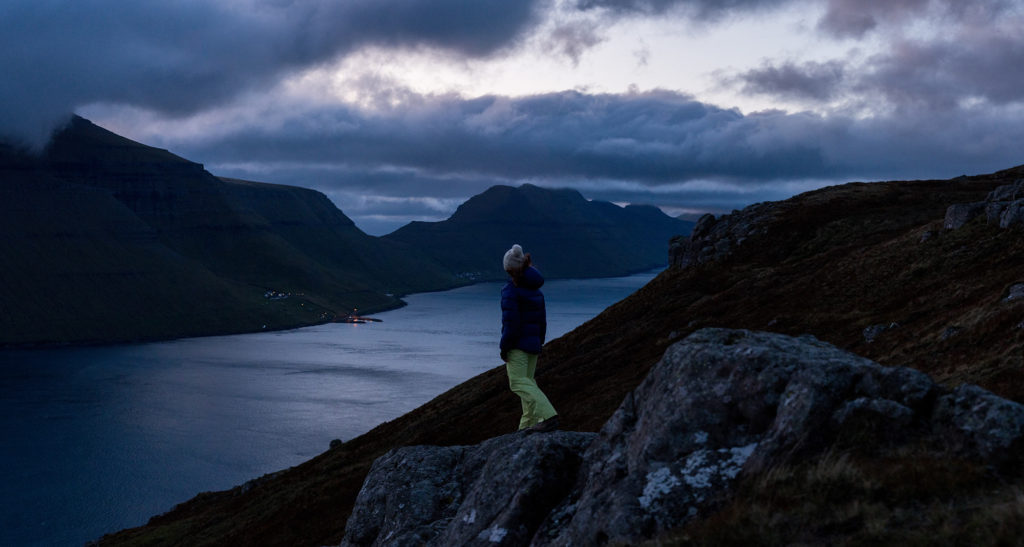
Dusk gave way to darkness. Zero light pollution in attendance, stars roared everywhere. Inner-voltage restored, this particular hike on Faroes made me look at everything lovingly as I became a stick of warm butter slowly losing shape, the whole place was beautiful because of it. It took on a dimension of aliveness, which I imbibed as a new feeling oozed through me – a quiet exuberance.
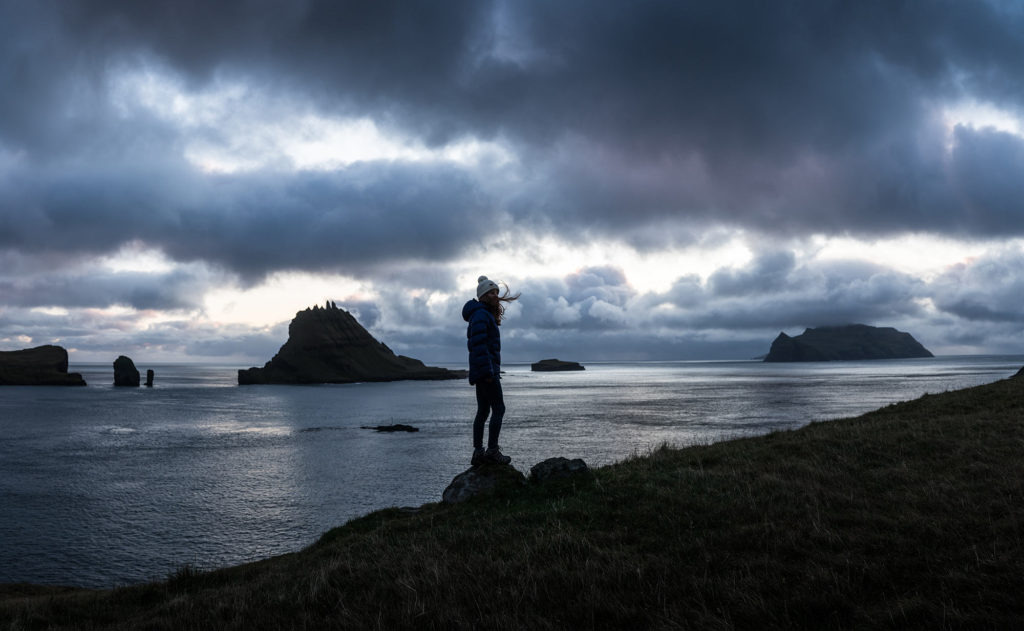
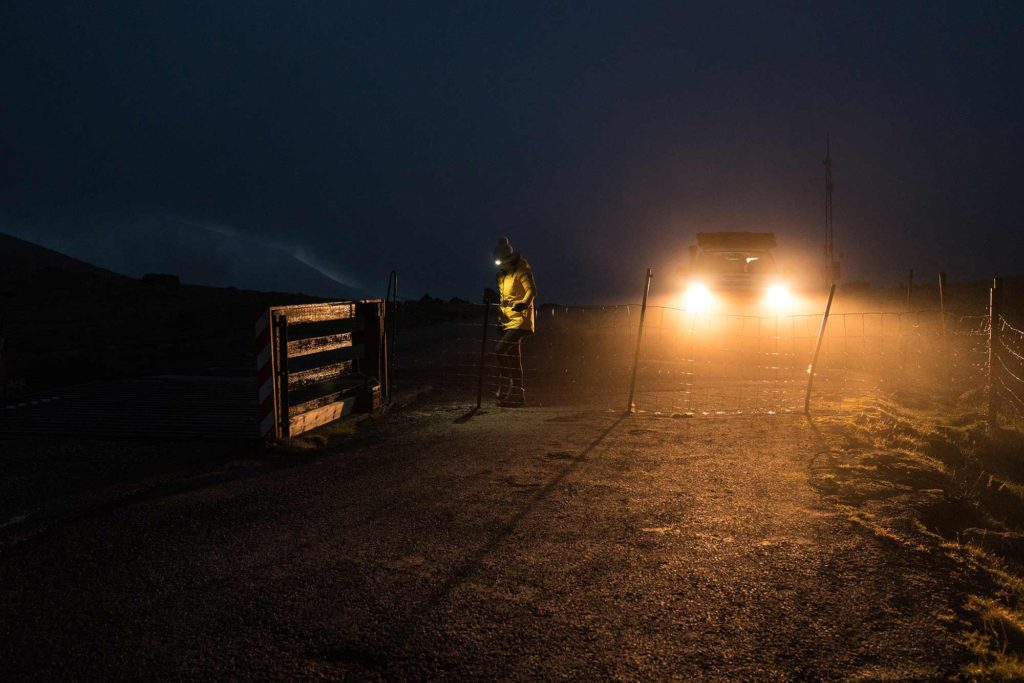
We’d love for you to follow us on Instagram and Facebook. Have a very Merry Christmas with your nearest and dearest, and wishing you a healthful New Year brimming with joy.

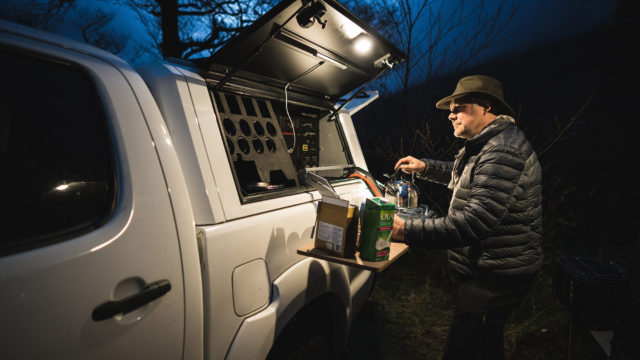
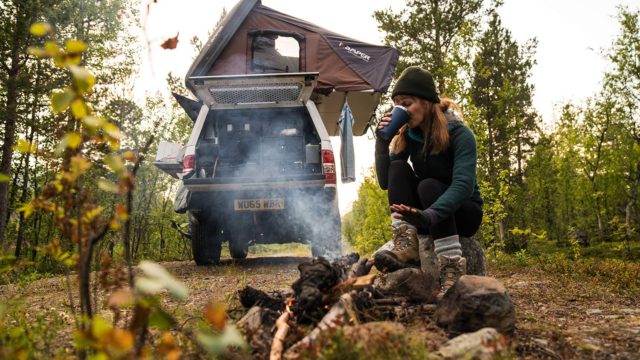
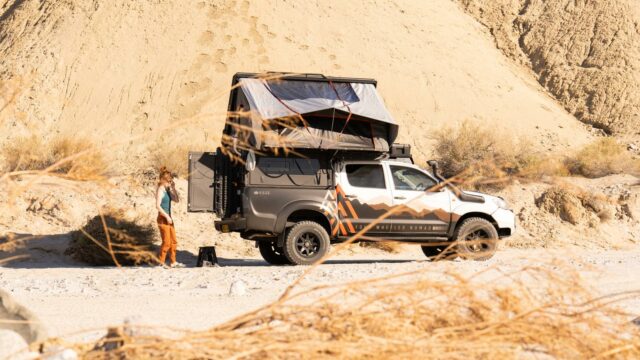
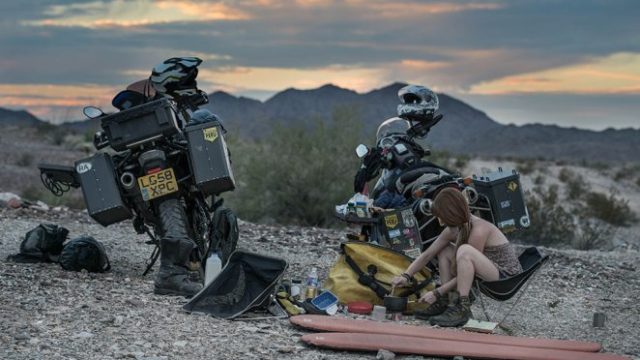
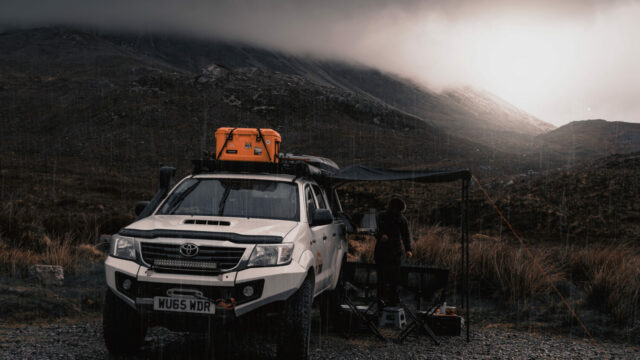
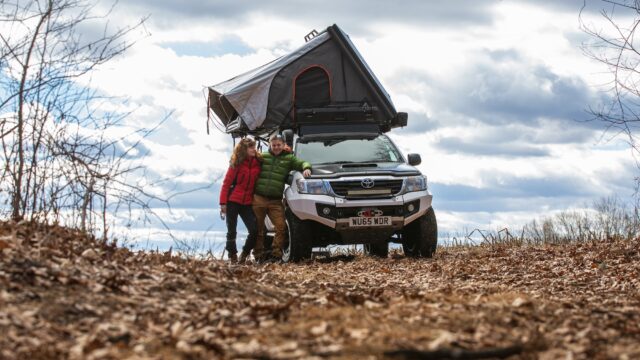
Hello, Lisa and Jason!
We met in Kirjobøur and again at Traelanipa a couple of days later. I enjoyed your blog post on Føroyar and the photos are awesome, Jason. I’m looking forward to your Iceland report. Safe travels and good health!
Happy New Year!
Hey Ralph
Lovely to hear from you and thank you very much for your warm words. Thrilled you liked our latest blog post – we’ll do our utmost to keep it up..! Happy New Year to you, have a good one chap. Cheers Lisa and Jase